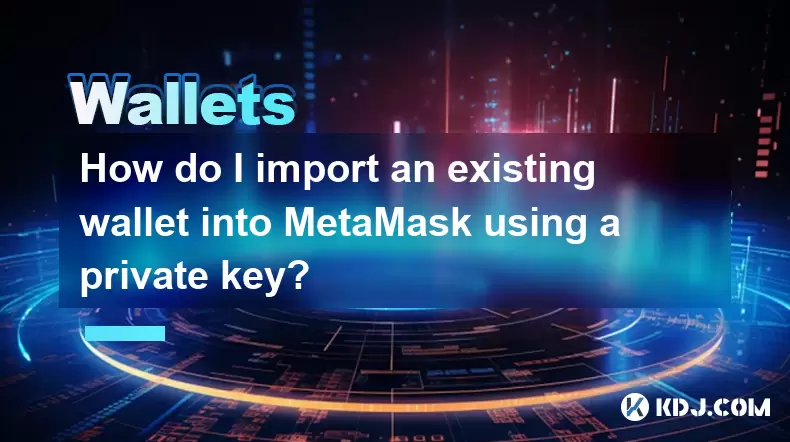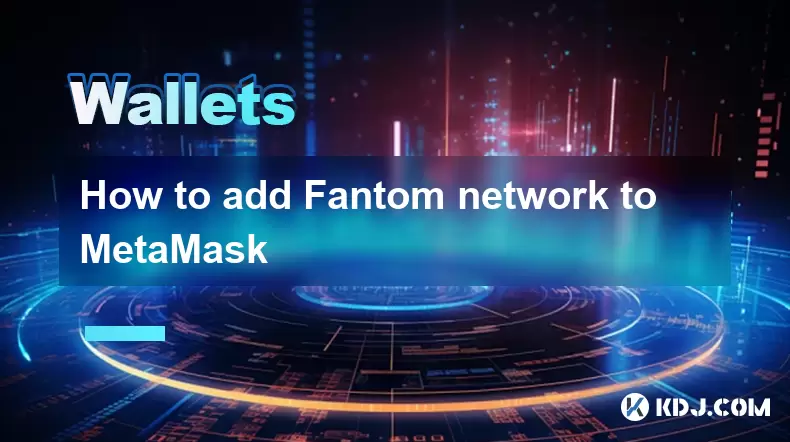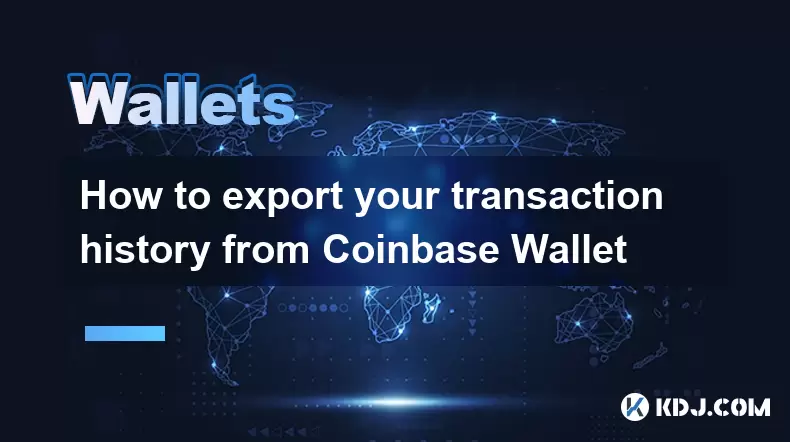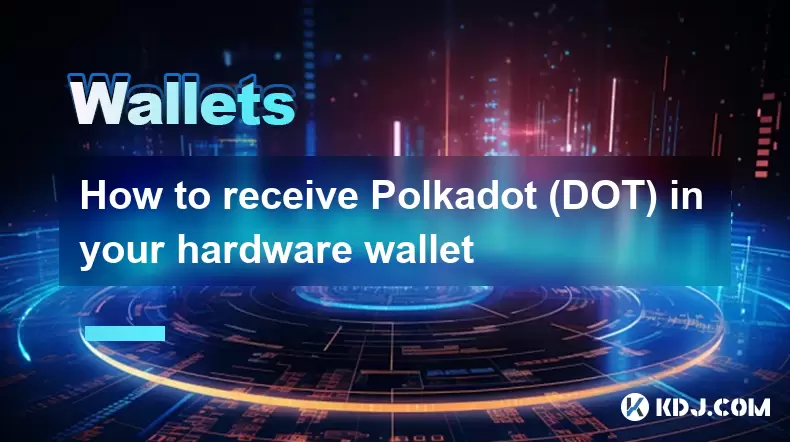-
 Bitcoin
Bitcoin $115100
1.27% -
 Ethereum
Ethereum $3675
2.71% -
 XRP
XRP $2.995
1.45% -
 Tether USDt
Tether USDt $1.000
0.02% -
 BNB
BNB $769.8
2.64% -
 Solana
Solana $168.0
3.25% -
 USDC
USDC $0.9999
-0.01% -
 TRON
TRON $0.3371
1.48% -
 Dogecoin
Dogecoin $0.2051
3.36% -
 Cardano
Cardano $0.7394
2.30% -
 Hyperliquid
Hyperliquid $38.15
0.42% -
 Stellar
Stellar $0.3966
-0.36% -
 Sui
Sui $3.486
2.93% -
 Chainlink
Chainlink $16.72
2.52% -
 Bitcoin Cash
Bitcoin Cash $568.0
4.36% -
 Hedera
Hedera $0.2440
2.59% -
 Ethena USDe
Ethena USDe $1.001
0.04% -
 Avalanche
Avalanche $22.16
2.06% -
 Litecoin
Litecoin $119.1
-0.73% -
 UNUS SED LEO
UNUS SED LEO $8.991
0.04% -
 Toncoin
Toncoin $3.232
-0.39% -
 Shiba Inu
Shiba Inu $0.00001233
2.82% -
 Uniswap
Uniswap $9.717
2.53% -
 Polkadot
Polkadot $3.664
1.85% -
 Dai
Dai $1.000
0.01% -
 Monero
Monero $281.2
-3.89% -
 Bitget Token
Bitget Token $4.350
1.55% -
 Cronos
Cronos $0.1428
5.07% -
 Pepe
Pepe $0.00001050
3.68% -
 Aave
Aave $262.3
3.54%
How do I import an existing wallet into MetaMask using a private key?
Import a wallet into MetaMask using your private key to access funds across devices—ensure the key is accurate, the app is genuine, and never share it. (154 characters)
Aug 07, 2025 at 03:35 am

Understanding Wallet Importation in MetaMask
Importing an existing wallet into MetaMask using a private key allows users to regain access to their cryptocurrency holdings from a previously created wallet. This process is essential when switching devices, recovering lost access, or consolidating funds. MetaMask supports wallet recovery via private key, which is a 64-character hexadecimal string uniquely tied to an Ethereum-based account. It's crucial to understand that the private key grants full control over the associated wallet, so security and confidentiality are paramount. Never share your private key with anyone, and ensure it is entered only on the official MetaMask extension or app.
Prerequisites for Importing a Wallet
Before initiating the import process, several conditions must be met:
- You must have the exact private key of the wallet you wish to import. This key is usually provided when the wallet is first created and may be stored in a text file, written on paper, or saved in a password manager.
- Ensure you are using the official MetaMask browser extension or mobile app. Avoid third-party clones or phishing websites.
- Confirm that the wallet uses the Ethereum (or EVM-compatible) network, as MetaMask primarily supports Ethereum-based assets.
- Make sure your current MetaMask account is not holding critical funds if you're considering switching accounts, as importing does not delete existing wallets but adds a new one.
Step-by-Step Guide to Import via Private Key
Follow these steps carefully to import your wallet: - Open the MetaMask extension in your browser or launch the mobile app.
- Click on the account icon located in the top-right corner of the interface.
- Select "Import Account" from the dropdown menu.
- Choose the "Private Key" option from the import methods presented.
- Carefully paste your 64-character private key into the designated field. Double-check for accuracy, as even a single incorrect character will result in access failure.
- Click the "Import" button to finalize the process.
Upon successful import, your wallet will appear in the account list, and you'll have full access to its balance and transaction history. MetaMask will automatically connect to the Ethereum mainnet or the network previously associated with the address.
Security Considerations During Import
Handling a private key requires extreme caution. The moment you paste your private key into any application, you risk exposure if the environment is compromised. Always ensure: - Your device is free of malware or keyloggers.
- You are on a secure, private network—avoid public Wi-Fi during this process.
- The MetaMask interface is the genuine official version, verified through the browser’s extension store.
- After importing, consider clearing your clipboard, as many operating systems retain copied text.
- Never store the private key in unencrypted files or cloud storage services.
If you suspect your private key has been exposed, immediately transfer all funds to a new, securely generated wallet.
Verifying the Imported Wallet’s Balance and Activity
After import, confirm that the wallet has been correctly restored: - Check the account address displayed in MetaMask matches the original wallet’s address.
- Navigate to a blockchain explorer such as Etherscan and enter the address to verify the transaction history and token balances.
- If tokens are not visible in MetaMask, you may need to manually add them by clicking “Add Token” and entering the contract address.
- Test the wallet by initiating a small transaction to ensure signing functionality works.
This verification step ensures that the private key was entered correctly and that the wallet is fully operational within MetaMask.
Troubleshooting Common Import Issues
Users may encounter several issues during the import process: - Invalid private key error: This occurs when the key contains extra spaces, incorrect characters, or is incomplete. Ensure no leading or trailing spaces exist and that the key is exactly 64 hexadecimal characters long.
- Zero balance displayed: Confirm the correct network is selected in MetaMask. If the wallet holds assets on a different EVM chain (e.g., BSC, Polygon), switch networks via the network dropdown.
- Account not appearing after import: Refresh the MetaMask interface or restart the browser extension. If using the mobile app, close and reopen it.
- Transaction signing failures: These may stem from incorrect network settings or gas fee miscalculations. Adjust the gas limit and ensure sufficient ETH is available for transaction fees.
Always cross-reference with a blockchain explorer to confirm the wallet’s actual state.
Frequently Asked Questions
Can I import a wallet created on a hardware device using its private key?
Most hardware wallets, such as Ledger or Trezor, do not allow direct export of private keys for security reasons. Attempting to extract a private key from such devices typically requires advanced and risky procedures. If the wallet was originally generated in software (like Exodus or Trust Wallet), and you have its private key, then yes, it can be imported into MetaMask.What happens to my original wallet after importing into MetaMask?
Importing does not alter or delete the original wallet. The private key remains valid, and both MetaMask and the original platform can access the same funds. However, both instances share the same private key, meaning transactions from one will reflect in the other. Use caution to avoid confusion or double-spending attempts.Is it safe to import a private key on someone else’s computer?
No, it is extremely unsafe. Any device that logs keystrokes or runs malicious software can capture your private key. Always use a trusted, personal device that you control and have scanned for malware.Can I import multiple wallets using different private keys into the same MetaMask account?
Yes. MetaMask allows you to import multiple accounts using separate private keys. Each will appear as a distinct profile within the account switcher. You can toggle between them seamlessly, but each private key must be managed securely.
Disclaimer:info@kdj.com
The information provided is not trading advice. kdj.com does not assume any responsibility for any investments made based on the information provided in this article. Cryptocurrencies are highly volatile and it is highly recommended that you invest with caution after thorough research!
If you believe that the content used on this website infringes your copyright, please contact us immediately (info@kdj.com) and we will delete it promptly.
- Fireverse Token: Igniting a Musical Revolution in Web3
- 2025-08-07 08:27:45
- Ethereum, L2 Withdrawals, and Decentralization: A New Yorker's Take
- 2025-08-07 08:32:33
- Avalanche vs. Ruvi AI: Daily Sales Tell a Story of Crypto Disruption
- 2025-08-07 06:29:35
- DeSoc: The Crypto to Buy Now for a Decentralized Future (and Maybe 43x Gains!)
- 2025-08-07 06:50:16
- Arctic Pablo Coin: Riding the Meme Coin Wave with a Deflationary Twist
- 2025-08-07 07:18:13
- XRP Price Skyrocket? Decoding the Cryptocurrency's Next Move
- 2025-08-07 07:31:50
Related knowledge

How to add Fantom network to MetaMask
Aug 07,2025 at 08:21am
Understanding the Fantom Network and MetaMask IntegrationThe Fantom network is a high-performance, scalable, and secure blockchain platform designed f...

How to export your transaction history from Coinbase Wallet
Aug 07,2025 at 06:50am
Understanding Coinbase Wallet and Transaction HistoryCoinbase Wallet is a self-custodial cryptocurrency wallet that allows users to store, manage, and...

How to export your transaction history from Coinbase Wallet
Aug 07,2025 at 08:49am
Understanding Coinbase Wallet and Transaction HistoryCoinbase Wallet is a self-custodial cryptocurrency wallet that allows users to store, manage, and...

How to set up a new Ledger Nano S Plus
Aug 07,2025 at 06:01am
Unboxing and Initial InspectionWhen you receive your Ledger Nano S Plus, begin by carefully unboxing the package. Inside, you should find the Ledger N...

How to receive Polkadot (DOT) in your hardware wallet
Aug 07,2025 at 07:03am
Understanding Polkadot (DOT) and Hardware Wallet CompatibilityReceiving Polkadot (DOT) into a hardware wallet begins with understanding the ecosystem ...

How to receive NFTs in your Ledger Nano X
Aug 07,2025 at 02:45am
Understanding NFTs and Ledger Nano X CompatibilityNFTs (Non-Fungible Tokens) are unique digital assets stored on a blockchain, typically on networks l...

How to add Fantom network to MetaMask
Aug 07,2025 at 08:21am
Understanding the Fantom Network and MetaMask IntegrationThe Fantom network is a high-performance, scalable, and secure blockchain platform designed f...

How to export your transaction history from Coinbase Wallet
Aug 07,2025 at 06:50am
Understanding Coinbase Wallet and Transaction HistoryCoinbase Wallet is a self-custodial cryptocurrency wallet that allows users to store, manage, and...

How to export your transaction history from Coinbase Wallet
Aug 07,2025 at 08:49am
Understanding Coinbase Wallet and Transaction HistoryCoinbase Wallet is a self-custodial cryptocurrency wallet that allows users to store, manage, and...

How to set up a new Ledger Nano S Plus
Aug 07,2025 at 06:01am
Unboxing and Initial InspectionWhen you receive your Ledger Nano S Plus, begin by carefully unboxing the package. Inside, you should find the Ledger N...

How to receive Polkadot (DOT) in your hardware wallet
Aug 07,2025 at 07:03am
Understanding Polkadot (DOT) and Hardware Wallet CompatibilityReceiving Polkadot (DOT) into a hardware wallet begins with understanding the ecosystem ...

How to receive NFTs in your Ledger Nano X
Aug 07,2025 at 02:45am
Understanding NFTs and Ledger Nano X CompatibilityNFTs (Non-Fungible Tokens) are unique digital assets stored on a blockchain, typically on networks l...
See all articles

























































































